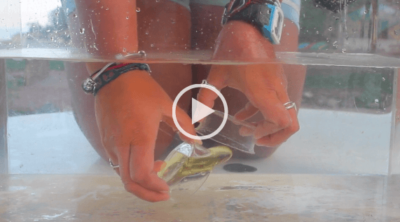
Many animals naturally float at the surface and have to force their way down below the surface. Fish however, have a very convenient adaptation. Two ways to animals in the ocean control their buoyancy, or the upward force exerted by a fluid, are with a swim bladder and an oily liver. Osteichthyes (bony fish) use swim bladders that are filled with oxygen taken in by their gills. The more air in the swim bladder the more buoyant the fish and the less air in the swim bladder the less buoyant the fish. The swim bladder is similar to human lungs in the way that it expands and deflates. Chondrichthyes (cartilaginous fish) use an oil filled liver to control their buoyancy. The oil lightens the shark’s heavy body to keep it from sinking and saves the sharks energy when using its fins to keep itself moving. The oily liver is also used for other daily functions such as digestion. The name for this oil is squalene. Without these organs they would not be able to control their location in the water column. These organs can help them stay neutrally buoyant.
A fun way to test how oxygen and oil react in water is to fill a tank with water and submerge each at different times. Push an upside down cup into the water, air will be trapped inside the cup. Next take a second cup upside down and push it into the water but allow water to fill it. Then you should be able to move the cups close together and pour the air filled cup into the water filled cup. The air will try to escape to the surface but will get caught in the second cup. Do this a second time with a cup full of oil instead of air. A lid will be needed to cover the cup of oil in order to turn it upside down to submerge it. Once submerged in water remove the lid and pour the oil into the cup filled with water. This demo also gives you a chance to observe how the oxygen and oil are positively buoyant and why they need these organs to assist in the vertical movement in the water column.


